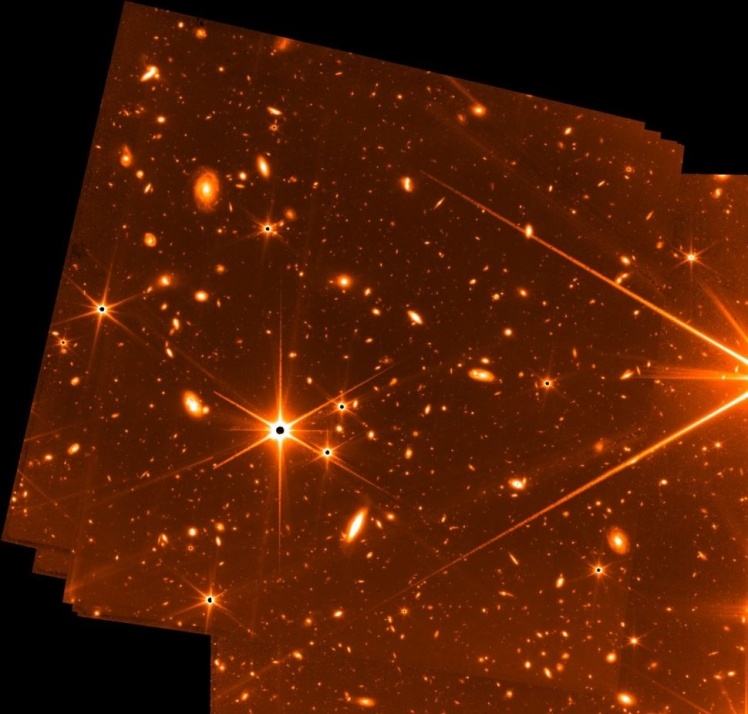The "James Webb" space telescope during testing took a picture of distant space. Scientists say this is one of the most profound images of the universe.
This is reported by Space.com.
The National Aeronautics and Space Administration (NASA) released this image on July 6. The image is a composite of 72 images taken by the James Webb Precision Targeting Sensor with a 32-hour exposure over eight days in May.
This is a test image. The sensor made it a false color during testing. The telescopeʼs near-infrared camera focused on a star called HD147980, while James Webb itself spun from side to side like an airplane.
The image shows the cosmos in a color scheme from white to red. White shades show objects that emit the brightest infrared light, and reds show dimmer objects.
In the image you can see several stars that flash and resemble a plus sign. The rest are galaxies.
"The faintest blobs in this image are exactly the types of faint galaxies that Webb will study in its first year of science operations," said telescope scientist Jane Rigby.
A team of specialists is finishing putting the telescope into operation and plans to show the first full-fledged scientific images on July 12.
- On December 25, 2021, NASA launched the $10 billion James Webb Space Telescope, which will replace the Hubble telescope. It was sent to a distance of 1.5 million kilometers from the Earth — to the L2 point. Scientists have high hopes for "Webb" — it will help to look much deeper into the universe and study galaxies and planets in more detail.
- On December 29, NASA reported that the telescope will work longer than expected. An analysis of the trajectory showed that its fuel reserve would be enough for more than 10 years of operation.
- On February 11, the "James Webb" space telescope sent the first photo taken by it.
- On June 9, one of the mirrors of the James Webb space telescope collided with a tiny fragment of an asteroid. A microparticle of an asteroid left a dent. The collision had a noticeable effect on the observatoryʼs data transmission but did not disable the device.

